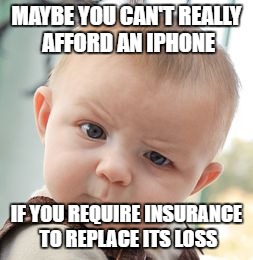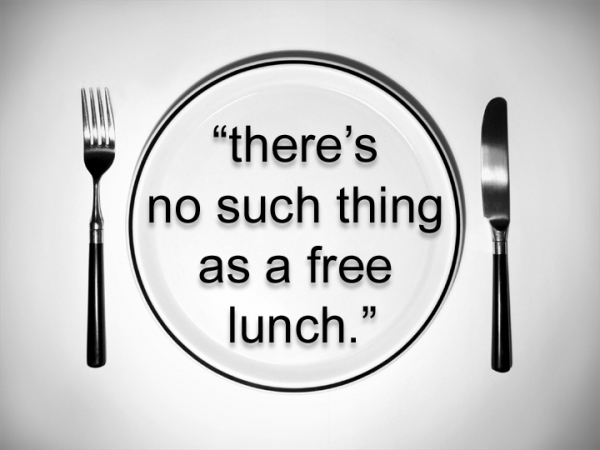It’s been some time (close to 3 years) since I last reviewed our insurance policies. Truth be told, I was going to review it only when there’s a change to our family nucleus. #keepingfingerscrossed
Let’s hope there will be some update on this before the end of 2017. (And yes, I don’t think I am being really greedy with this timeline. )
But even then, I doubt there will be a big change to my insurance philosophy. In fact, based on my experiences during the past three years, my conviction to choose term insurance over whole life or endowment policies has become even stronger.

And finally, we have some industry practitioners like DIY Insurance coming out to campaign for term insurances.
Honestly, it’s a matter of time before I purchase my next term insurance from DIY Insurance, Singapore’s First Life Insurance Comparison Web Portal. On the portal, I can easily compare insurance products across insurers.
More importantly, I am confident of receiving independent and competent advice from them since the staff are salaried-based. Much lower risk of conflict of interest there and there’s even a 30% rebate to me on the commissions the firm earns!
To further highlight their reputation and integrity, their CEO, Christopher Tan, recently wrote a comprehensive E-Book highlighting the case for term insurances, which provided further impetus for this post.
Insurance Is A Transfer Of Risk
In my humble opinion, the main purpose of purchasing insurances is to hedge/transfer our risk, and at a small cost.
In this natural form, insurance is a beneficial tool for most people. This is because human beings suffer from risk-aversion and having insurance to protect them from catastrophic losses would increase the average utility of the person and population.
If you struggled with understanding the previous sentence and is ready for some mumbo jumbo about adverse selection and moral hazard to understand the basics of insurance better, you can refer to this earlier post I had written.
Otherwise, what I meant was that basically, I will insure myself against an outcome that could potentially wipe out all our assets and create financial strain in our lives.

For example (touch wood), my death and the loss of my income could result in some financial difficulties for the Mrs in servicing our $200,000 mortgage. Therefore, even if the Home Protection Scheme for our BTO was not compulsory, we would definitely have purchased a mortgage insurance.
If I Can Bear The Risk, I Self-Insure
However, for other kinds of policies like accidental, dental, or even iPhone insurances, we treat them with immense disdain. For example, I honestly feel it really shouldn’t be that hard to save up a few thousand dollars to insure against the small probability of requiring a dental operation.

We need to bear in mind that private insurance companies are not charities. They are profit-making enterprises by nature. On average, for every $1000 of insurance premiums handed to them, they probably take a $100 cut.
If feasible, I try to self-insure as much as possible to reduce the cut I hand over to private insurance companies.
Otherwise I Turn To Affordable Term Insurances
The main reason behind my purchase of each insurance is to prevent myself from being a financial burden to my loved ones. If something unfortunate and catastrophic happens to me, a sum of money will be released from an appropriate insurance plan.
For example, if I were to be struck by a serious illness or disease, the chances of me being hospitalized would be very high. My Hospitalisation & Surgical (H & S) a.k.a MediShield Plans would kick in to offset the bulk of our hospitalisation expenses.
And if I were to meet my maker prematurely, the mortgage insurance would ensure that our house will be fully paid for, the Dependents’ Protection Scheme would pay out around $50,000 while my Aviva Global Protection Plan will add another $150,000 to the sum being left behind to the Mrs.

All of the insurances I have stated above are actually term plans. I am only paying for pure protection and will not get any money back at the end of the coverage. Therefore, the premium for term plans is very low and I currently spend less than $1,000 a year on my insurance needs.
Whole Life Plans “Perks” Are Not Attractive To Me
Whole life insurance policies often appear attractive because they offer permanent coverage – the policy will continue for as long as you live.
However, if I take a step back and analyse my insurance needs, they are all temporary and would cease by the time I turn 65.

The mortgage would have been paid up, my children would have entered the workforce and become independent adults and I should have accumulated enough savings for any potential medical needs.
Still, I definitely won’t mind if this permanent coverage perk comes free of charge. Well, I am a Singaporean, afterall.
Unfortunately, there is no free lunch.
If we have two or three children within the next 5 years, there is a strong likelihood I would have to increase my coverage to at least $500,000 for adequate protection.
The annual premiums for a term plan with a $500,000 coverage is around $2,000 However, for a comparative whole life policy, the annual premiums will be a staggering $15,000!

The much much higher premiums are often rationalised through the surrender value. A large proportion of the premiums are actually invested by the insurance companies and returns are often projected to be between 3% to 5%.
However, most of these returns are not guaranteed and they are likely to disappoint. I have had a bad experience with the investment returns of an Investment-Linked Policy but don’t just take it from me. The financial blogosphere is littered with many other examples and the most recent I have read is Turtle Investor’s surrendering of his AIA Prime Life Policy.
If a financial planner tells me that I would be better off with a 2% return rather than letting the savings rot under the bed, I will reassure him that achieving a 3-4% return with low volatility is being made easier and easier.
Going by historical returns, the STI ETF should easily achieve more than 5% returns in the long run. If I cannot stomach the (negative) volatility of the stock market, I could have half of the sum in the risk-free Singapore Saving Bonds that could yield more than 2% a year. A mixture of equities and bonds is how most insurance funds invest anyway.
YES. I PREFER TO BUY TERM AND INVEST THE REST.
If you are interested to find out more about the types of insurance you require and the differences between them, do check out this e-book from DIYInsurance.
I understand it’s quite a long read at 77 pages. If you don’t have that much time to spare, at least check out the gems between Pages 23-55!
is this is another advertorial, then providend is really investing into online advertising!
i despair that there isn’t a non-profit government organisation paying for these advertorials and moving our insurance industry model to a no-middlemen model.
companies with insurance salesmen and brokers like providend are middlemen.
plain and simple.
Hi smk,
Yes, this is an advertorial for DIYInsurance.
I guess with insurances like Dependents’ Insurance Scheme (DPS), HPS and MediShield LIFE, the government has already stepped in.
Great education! Thanks for sharing this! Saved for future reference!